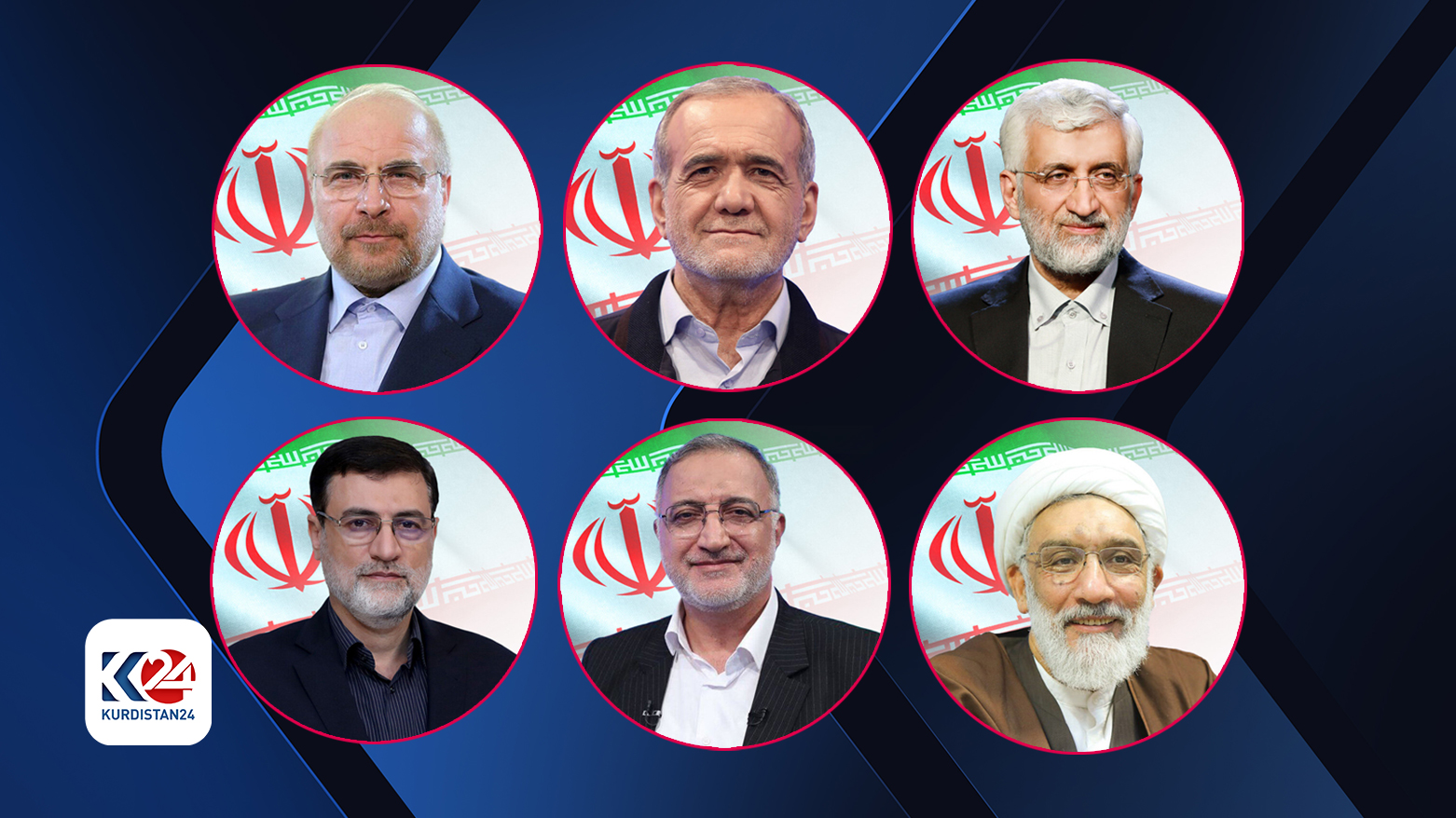Iran prepares for presidential election amid withdrawals
Initially, six candidates were in the race, but it has now narrowed to four: three conservatives and one reformist, following the withdrawal of two conservative contenders, Alireza Zakani and Amir-Hossein Ghazizadeh Hashemi.

ERBIL (Kurdistan24) – Iran's fourteenth presidential election is set for Friday, June 28, 2024, with a reduced slate of candidates.
Initially, six candidates were in the race, but it has now narrowed to four: three conservatives and one reformist, following the withdrawal of two conservative contenders, Alireza Zakani and Amir-Hossein Ghazizadeh Hashemi.
This marks the third early election in the 45-year history of the Islamic Republic of Iran. The first was held after Abolhassan Banisadr was expelled from parliament in June 1981.

Banisadr, Iran's first president following the 1979 Revolution, served from February 1980 until his impeachment in June 1981.
His successor, Mohammad-Ali Rajai, was assassinated just four weeks into his presidency, leading to another early election.

The current early election is necessitated by the untimely death of former President Ebrahim Raisi, who perished in a helicopter crash in Tabriz province on May 19, 2024.
Supreme Leader Ali Khamenei announced that First Vice-President Mohammad Mokhber would assume the executive role until the election.
The remaining candidates have promised to address key issues such as lifting international sanctions, combating inflation, adjusting salaries for employees and pensioners, fostering economic growth and job creation, improving international relations, enhancing internet access, and advancing women's rights.
Voter Participation and Polling Logistics
According to Iranian Interior Minister Ahmad Vahidi, over 61 million people are eligible to vote.
The Election Headquarters, represented by spokesperson Mohsen Eslami, has established 24,522 ballot boxes in urban centers and 24,118 in rural areas. Additionally, there will be 43,425 fixed polling stations and 15,215 mobile stations.
Overseas Voting
Iranian citizens abroad will have access to 340 ballot boxes, including 23 in six Iraqi provinces and the Kurdistan Region, as stated by Alireza Mahmoudi, Director General of Consular Affairs at the Iranian Foreign Ministry.
Voting will take place in 100 countries, with 30 polling stations set up in 17 U.S. states. However, Canada has declined to host any polling stations.

Candidates Overview
The remaining candidates are:
- Masoud Pezeshkian: A reformist politician and current representative of Tabriz in the Iranian Parliament, previously served as Minister of Health.
- Mostafa Pour-Mohammadi: A conservative politician and former Minister of Justice and Interior.
- Saeed Jalili: A conservative politician and former Secretary of the Supreme National Security Council.
- Mohammad Bagher Ghalibaf: A conservative politician and current Speaker of the Iranian Parliament.
With campaigning activities suspended since 8 am on Wednesday, June 26, 2024, the focus now shifts to the voters as Iran prepares for a pivotal election following a period of political upheaval and loss.